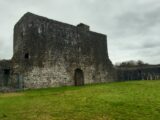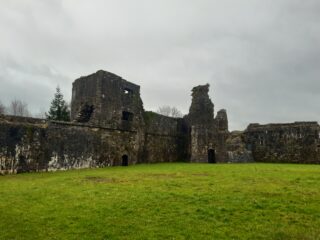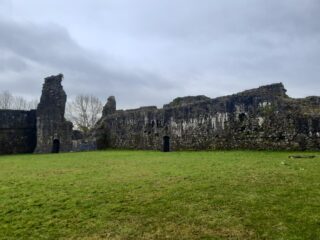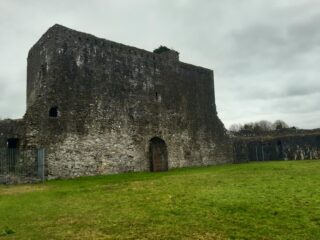Fógra
WARNING: It should be noted that these sites are unguided and a level of care and caution should be maintained during all stages of your visit. The Office Of Public Works (OPW) will not be held responsible for any damages, injuries, or losses that occur
Ballymote Castle
To the west of Ballymote town stands this impressive Anglo-Norman castle. Almost square in plan, it consists of an entrance in the middle of the north wall which is flanked by three storeyed twin-towers. The curtain wall has a tower at each corner, with a D-shaped tower midway along the east and west curtain walls. The walls are 3m thick. The entrance/gatehouse still has the remains of a portcullis slot. The remains of fireplaces are found in all six towers at ground level. Water spouts in the south facing gatehouse allowed water run-off into the enclosed castle keep.
The Annals of the Four Masters state that it was built by the Red Earl of Ulster, Richard de Burgo, in 1300. By 1317 it was captured by the O’Connor’s. In 1347 the MacDiarmada’s became the owners. In 1381 the McDonough’s had possession. It was then returned to the O’Connor’s until it was taken by the Governor of Connacht, Richard Bingham, in 1584. It was sacked in 1588. Reputedly sold to Red Hugh O’Donnell in 1598, before marching onto the Battle of Kinsale, for £400 and 300 cows. Eventually in 1690 Lord Granard possessed Ballymote Castle and left it to ruin. The famous Book of Ballymote, including Lebor Gabála, Lebor na gCeart, Ogham writing, Dinshenchas and the Destruction of Troy, were partially written in Ballymote Castle circa 1391. Now held in the Royal Irish Academy.
Visit Historic Environment Viewer for more information on Ballymote Castle
Protect our Past - Click here to read about the importance of protecting our country’s unique heritage sites
This national monument is protected in accordance with the National Monuments Acts 1930 to 2014
Gailearaí
Suíomhanna cóngarach
Reilig Mheigiliteach na Ceathrú Móire
Na tuamaí meigiliteacha is sine in Éirinn suite i dtírdhreach drámatúil neoiliteach
Timpeall 18.1 km ón
Mainistir Na Búille Chistéirseach
Téigh siar i stair na mainistreacha in Éirinn
Timpeall 19.3 km ón
Mainistir Shligigh
Áit a mbaintear macalla as paidreacha na mbráithre i measc na bhfothrach
Timpeall 20.6 km ón




